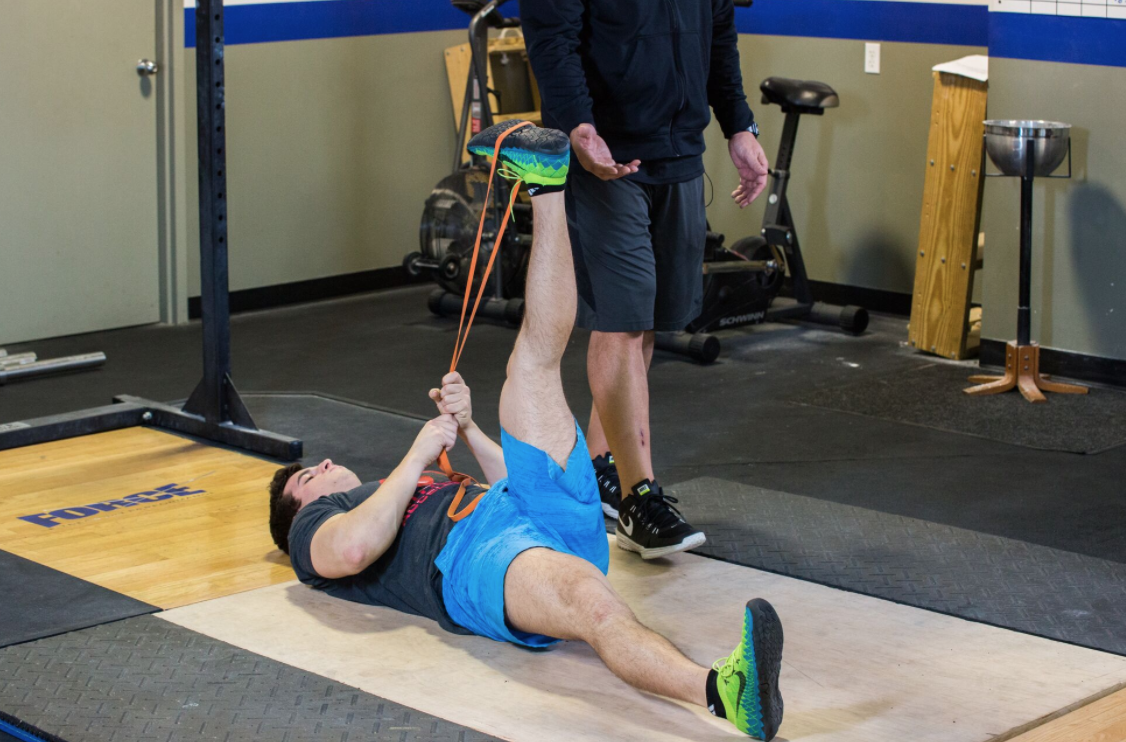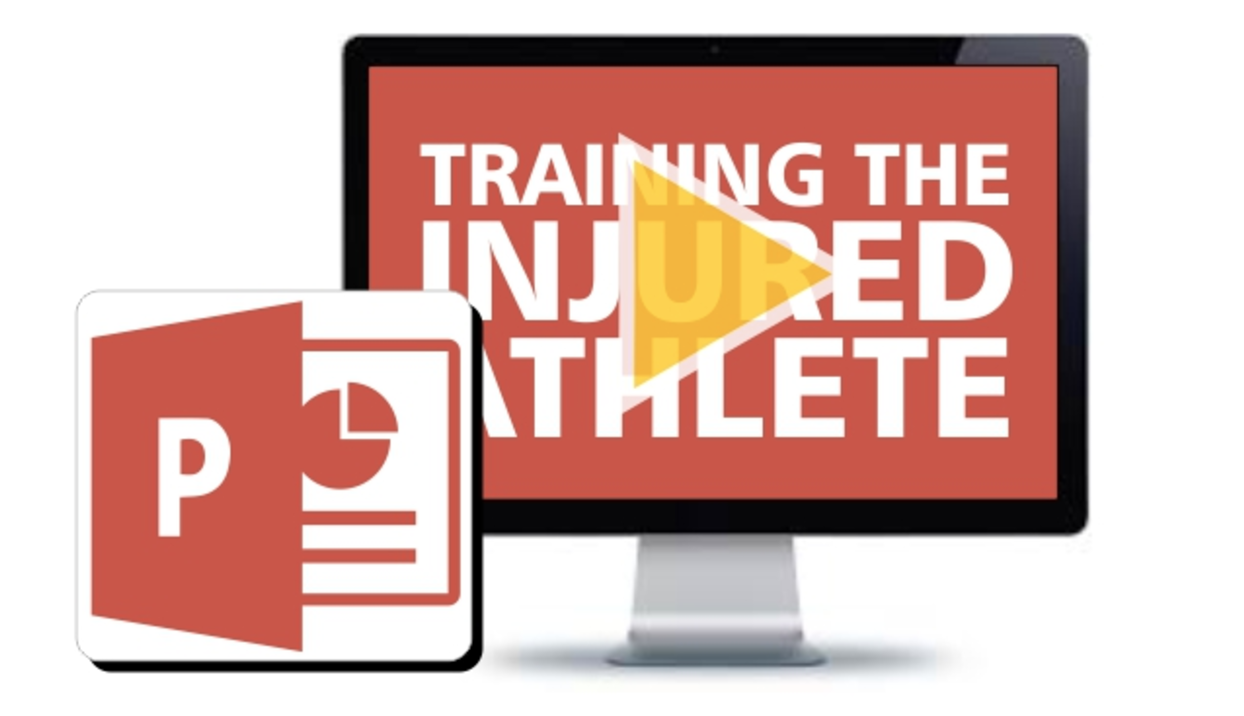HAMSTRING PULLS-
A NEW LOOK AT AN OLD PROBLEM
By Evan Osar

Hamstring injuries are a common injury affecting athletes of varying sports requiring straight ahead speed as well as those participating in athletic events requiring rapid acceleration and deceleration. Several mechanisms have been suggested as a means of determining the cause of these injuries including muscle imbalances, dysfunctions in motor control and postural alterations. This article will take a look at several causes of hamstring injuries from a motor control point of view. A comprehensive approach to improving functional stability and strength will be presented based upon available research and clinical experiences.
Muscle Tightness
Altered length of the hamstrings has been suggested by many therapists and trainers as one of the primary causes of hamstring strains. Shortness of the hamstring is a common explanation for “pulled” hamstrings and upon first observation this would appear to be logical reasoning. However, tight hamstrings may have a benefit to the athlete seeking improved performance. In fact, renowned researcher Dr. Stuart McGill suggests some of the highest performing athletes have the tightest or shortest hamstring length. And there is plenty of research that demonstrates a decrease in peak muscular output after performing static stretching protocols. Several studies have demonstrated that stretching one hamstring muscle decreases muscular output in the other non-stretched hamstring. It is often common to see athletes passively stretching their hamstrings prior to athletic performance. And most hamstring injuries occur at the point where the hamstrings should be contracting to push off or decelerating hip flexion and knee extension- both of which occur at high contractile speeds and under great tensile loads.
Clinical Pearl
A top professional baseball player reported for an evaluation of sacro-iliac pain. Upon evaluation he only demonstrated 45 degrees of active straight leg raise and 50 degrees of passive leg raise in supine. When asked how many times he had injured his hamstring (that were obviously short as compared to normative ranges), he reported to date he has never pulled or strained a hamstring (and he has been playing since 8 years of age). Key pearl: Muscle length does not dictate function. Function should be based upon individual evaluation of muscular strength and stabilization.
Motor Control Dysfunction
Dysfunction in motor control tends to be one of the most common causes for altered neuromuscular stabilization of the pelvis and hips. A recent study demonstrated increased gluteal and hamstring muscle activation during rotational trunk movements in patients with chronic low back pain patients as compared to a control group of non-low back pain patients. Work by Hodges, Hides, Richardson and others have demonstrated altered load transfer and stabilization strategies through the lumbo-pelvic-hip complex in clients with low back and pelvic pain. Clinical evidence has demonstrated many of these same dysfunctional strategies employed by athletes performing exercises with poor posture, a history of prior injury and/or inappropriate exercises.
Training For Increased Function
A multi-directional approach to improving motor control appears to be most effective whether the goal is prevention or rehabilitation of prior hamstring injuries. This approach consists of a three tiered protocol including stabilization, dissociation and integration.
Stabilization
Stabilization is the ability to control joint segments and maintain joint centration through entire ranges of motion and throughout a variety of movement spectrums. If these processes are bypassed as often happens in many training programs, compensations, substitutions, and eventual breakdown will occur. This is often the mechanism of most low back and hamstring injuries. Increased hamstring activation will occur when there is improper stabilization of the spine, pelvis or hips. Therefore, trunk and pelvic stabilization must precede training and conditioning of the lower extremity.
Dissociation and Centration
Dissociation is the ability to move joint segments independent of adjoining segments. This is also referred to as intersegmental articulation (the ability to move joints segmentally or one segment, then the next, the next, etc.). This is exemplified by watching a child move compared to an adult. The child tends to move much more fluidly and uses their entire body while the adult tends to move in “chunks” or only from specific joints that have available motion. Often this is observed at the hip joint, specifically where the femoral head articulates with the acetabulum. What will be often noted is during hip flexion as the hip nears the end of a client’s active range of motion, the hip and pelvis will move simultaneously. This can be viewed as a posterior pelvic tilt or “butt tuck” during a squat or deadlift. It often occurs with single leg exercise requiring hip flexion such as step ups, supine abdominal work that incorporates hip flexion (example leg raises) and during leg exercises such as squatting and lunging. Proper function requires optimal congruity between the femur and the pelvis and also the ability to move these structures independent of each other.
Centration is the optimal position of joint control. It is the ability to maintain integrity and an optimal axis of rotation between adjacent joint structures. The easiest way to visualize this is to imagine a door hinge. When the two parts of the hinge line up appropriately, the door swings optimally. When they do not, the door may swing but it is likely to jam or fall of the hinges completely. Joints are aligned in a similar fashion. Align the joints up properly and they function optimally with minimal wear and tear on bony and soft tissues structures. Attempting to function without proper alignment increases the tensile loads on soft tissue structures often leading to muscle spasms and strains.
Functional Integration
Once the individual is able to stabilize, dissociate and maintain appropriate joint control, functional movement patterns are instituted. These movements are progressed based upon client’s abilities and needs. Functional integration begins with activation of the deep fibers of the gluteus maximus. The deep fibers of the gluteus maximus serve as important stabilizers of the sacroiliac joint. When the deep gluteal fibers fail to control the sacroiliac joint, there is increased activation of the hamstrings. The hamstrings should function as hip extenders and knee flexors and often succumb to overuse injuries as they attempt to stabilize the sacroiliac joint and simultaneously move the lower extremity. The primary goal of training is to optimize lumbo-pelvic-hip stabilization and then progress to functional movement patterns.
 Activation of the deep fibers requires precision in cueing and muscular control. The goal is to activate these deep fibers with minimal contribution from the superficial fibers and maintain this activation while performing diaphragmatic breathing. The individual begins by lying on their stomach preferably propped over a bench or massage table (see figure 1). This can also be performed while lying on the floor however the pelvis should be propped over a rolled up gym mat. If using the floor version, the legs are straight and the forehead should be resting on the forearms. The individual begins diaphragmatic breathing while relaxing the hip region completely. The individual then visualizes a line between their ischial tuberosities and activates the deep gluteals. The effort should be about a 10-25% of maximum contraction and they should maintain this contraction for 10 seconds. The goal is to activate the deep fibers and to make sure these fibers can work at a level equal to the strength of the superficial fibers. Work up to 10 sets of 10 seconds holds while breathing and maintaining this low level of contraction.
Activation of the deep fibers requires precision in cueing and muscular control. The goal is to activate these deep fibers with minimal contribution from the superficial fibers and maintain this activation while performing diaphragmatic breathing. The individual begins by lying on their stomach preferably propped over a bench or massage table (see figure 1). This can also be performed while lying on the floor however the pelvis should be propped over a rolled up gym mat. If using the floor version, the legs are straight and the forehead should be resting on the forearms. The individual begins diaphragmatic breathing while relaxing the hip region completely. The individual then visualizes a line between their ischial tuberosities and activates the deep gluteals. The effort should be about a 10-25% of maximum contraction and they should maintain this contraction for 10 seconds. The goal is to activate the deep fibers and to make sure these fibers can work at a level equal to the strength of the superficial fibers. Work up to 10 sets of 10 seconds holds while breathing and maintaining this low level of contraction.
Once the basic version is mastered, the client is progressed to prone hip extensions. The client maintains the prone lying position and bends one knee to ninety degrees. The thigh should remain in line with the body throughout the movement. The client activates the deep gluteals and the hip is then extended to the client’s ability with no substitution (evidenced by movement of the spine and/or pelvis as the leg is lifted) of the spine. Perform 10 isometric reps with a 10 second hold while maintaining activation of the deep gluteals. These can be performed with either an internal or external rotation bias depending on your client’s individual needs (see figure 2 and 3).


 Walking lunges are one of the more effective functional progressions once the basic activation sequence is mastered. The client is instructed to activate the deep gluteal muscles and while maintaining this contraction, the individual performs walking lunges. This movement can be progressed by having the client place their hands behind their head while holding dumbbells or wearing a weight vest as in figure 4.
Walking lunges are one of the more effective functional progressions once the basic activation sequence is mastered. The client is instructed to activate the deep gluteal muscles and while maintaining this contraction, the individual performs walking lunges. This movement can be progressed by having the client place their hands behind their head while holding dumbbells or wearing a weight vest as in figure 4.
The single leg step up (figures 5-6) is an essential exercise for developing unilateral strength and balance. The individual places one leg on the step or bench. They will bend equally at the hip, knee and ankle and activate the deep gluteals. The movement is initiated by pushing the body up with the glutes of the forward leg (triple extension). The rear leg is brought into hip flexion, knee flexion and ankle dorisflexion (triple flexion). The lift should be completely from the stationary hip (leg that remains on the step or bench) and there should be no deviation or movement of the trunk or spine.


Conclusion
Altered stabilization of the lumbo-pelvic-hip complex is one of the most common causes of hamstring injuries. Optimal stabilization requires specific training aimed at restoring activation of the deep, medial fibers of the gluteus maximus. Activation of the deep, medial gluteals, integration of the kinetic chain followed by the proper progressions is an effective method in restoring function of the hamstrings whether the client’s goal is to simply decrease pain or increase performance. A well balanced program focusing on stabilization, dynamic flexibility and strength training will help ensure the hamstrings can withstand an individual’s functional demands whether they be athletic or simply to get through the tasks of everyday life.
Recommended Athletes' Acceleration
Products
—————————————————————————–
References:
Osar EM. Form and Function- 2nd Edition, Fitness Education Seminars, Chicago IL, 2005.
Osar EM. Complete Hip and Lower Extremity Conditioning, Fitness Education Seminars, Chicago IL, 2005.
Osar EM. Complete Program Design, Fitness Education Seminars, Chicago, IL 2006.
Pirouzi S, Hides J, Richardson C, Darnell R, Toppenberg R. Low back pain patients demonstrate increased hip extensor muscle activity during standardized submaximal rotation efforts. Spine. 2006 Dec 15;31(26):E999-E1005.
—————————————————————————–




0 Comments for “HAMSTRING PULLS- A NEW LOOK AT AN OLD PROBLEM”